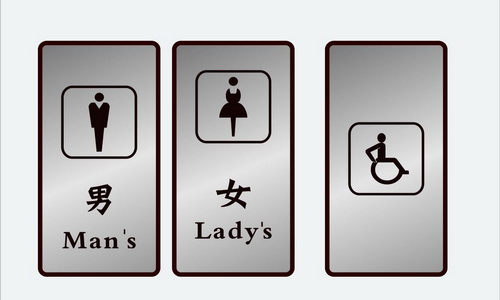Toilets in China
There are horrific stories about the toilets in China. Some might not be true, but going to a squat toilet would be a headache for many newcomers. In reality, a toilet experience much depends on whereabouts you are in China and what kind of establishments you're visiting. Clean and sanitary western-style toilets have come a long way in the past decades, and they are catching up in big cities and decent public areas such as airport, railway stations, hotels, restaurants and subway stations. But you could still probably venture into some shocking squatty potties at streets and touristy sites.
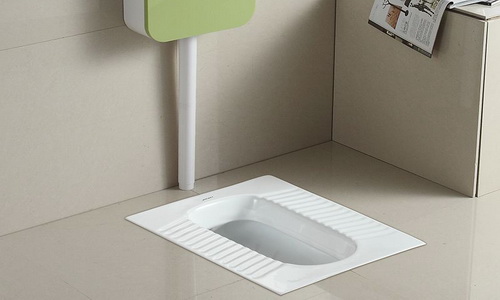
One important thing is that you should always have your own toilet paper as many public facilities do not supply it to toilet users. This article will set straight your expectations about toilets in different places and walk you through the way to cope with Chinese squat type toilets.
In fact, western toilets are widely applied in modern households of the country. In China, expats are more likely to accessing western bathrooms at most places where they could be. Nearly hotels of all levels in China adopt clean sitting type toilets that you will certainly be fine with.
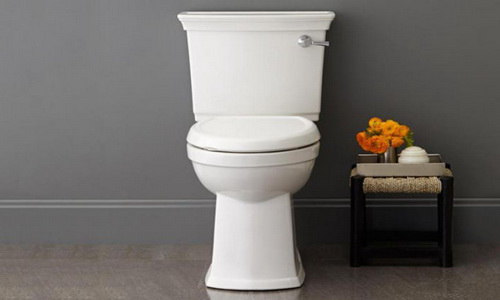
Big shopping malls, airports, upscale restaurants, western chains and major tourist attractions like Forbidden City and Terracotta Army Museum are available for western style toilets. Such restrooms usually have attendants who practically live there to keep them tidy and clean. In most cases, you might walk into a bathroom with both western and Chinese toilets, and there will be signs on the doors indicating which the sitting-styled ones are.
Squat toilets still reign the supreme in public areas of China, while it’s partially because Chinese people get used to them. If you find yourself outside the comfort of hotels, you will probably venture into a squat-style restroom especially in smaller cities, busy streets, or populated tourist attractions. Most public toilets become cleaner and better, while you may encounter smelly ones in some remote and less developed areas like Tibet (Potala Palace does have nice and decent toilets), Qinghai and Mongolia as well as some minority villages in southwest China. At worst, one may have to use toilets without complete privacy, like door-less stalls or some squat troughs in primitive condition.
If you have to squat for your business, do not panic. Using squat toilets could be very nice for the sake of one's hygiene. All you need to do is to psych yourself up to use a Chinese squat toilet.
Are you wondering what a squat toilet experience is going to be? A squat toilet is a ceramic urinal in the ground that can flush, and one needs to squat or hover over it for the business. There will be stalls and doors to keep your privacy. Usually, you need to position yourself over the toilet by facing forward the toilet hood. After the business, will find a trip lever (handle) on the tank or a foot pedal on the ground to flush the toilet.
More and more people opt for traveling by high-speed trains in China, and toilets on these trains are much better and usually of western sitting type. There are also disposable toilet seat covers and tissues offered, but they could run out soon without timely replenishment. Yet the restrooms of the ordinary speed trains are a bit unpleasant. Most are squat styles that could be often smelly, without attendant to clean them up at times. The toilets on the soft sleeper carriages are much cleaner, and even sometimes you could luckily find a western-style toilet.
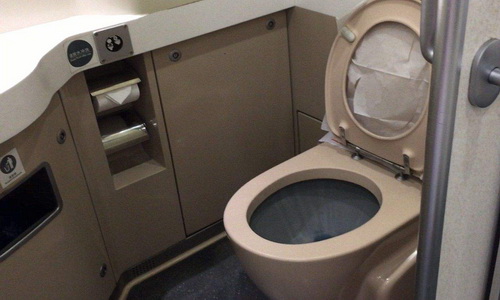
Now, nearly all the airports, railway stations and metro stations are facilitated with barrier-free restrooms. Big parks, malls, popular attractions and international hotels also have accessible toilets for the physically challenged people. As the same, there will be usually a signage outside showing its availability.
Besides, in the middle carriage of the bullet trains, a handicap toilet is equipped accessible for wheelchairs. However, the wheelchair-accessible public restrooms have not been a norm yet in China, so do not count on locating a handicap-friendly facility at every street or block.
Free toilet paper and hand soap are the norm in public restrooms for spoiled westerners, while China is a country where you need to bring your own toilet paper. In some upscale and fancy places, toilet tissues and sanitizer are often provided. Before departure from the hotel, make sure you prepare plenty of toilet paper as many public restrooms do not provide them. Like most Chinese travelers, I would also suggest you keep several packs of pocket tissues and wet wipes with you at all times, and that could be bought at any convenience stores or street kiosks.
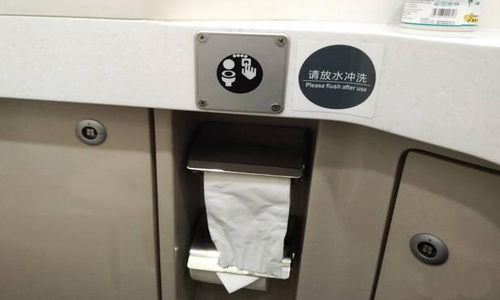
Moreover, flushing toilet paper is a no-no in the country. The old and worn-out plumbing of the public restrooms usually cannot cope with that. There are paper wads beside the squat potty, and that’s the place where Chinese people discard the waste.
- In malls and touristy areas, you can usually see people in long queues for the women's bathroom. Once you see a stall is available, grab the chance in case of long waiting, especially for senior travelers.
- Except some upscale establishments, you can hardly find public toilets offering a hand sanitizer or a soap. You are advised to carry one of pocket size in case.
- Unlike western countries, usually there is no warm but cold water in the trough available for washing your hands after doing the business.
- Almost all Chinese public bathrooms are free, but in some small places or in travel peak seasons, using a public toilet may require a small charge of RMB 1 per person.
- Traveling in middle of a desert or grassland of China, it’s even harder for you to find even a squat-style toilet. In such case, a pee pit is used most.
- You could take a preventative peeing before leaving hotel is a good way to avoid the Chinese toilets outside. Besides, you shall consider some pit-stops at restaurants and attractions (where you can usually find nice toilets) in between your tour so that you won’t need to use street-side public bathrooms.
- Like anywhere else in the world, restrooms are clearly marked by signage like WC, Restroom, Weishengjian in China. Chinese character男 suggests it’s for men, while女 for female.
- If you have travel companions, let them keep your bags before entering a public restroom in case there is no hook on the wall for you to settle them. Otherwise, bags will make it more difficult to balance yourself.
- You can check the availability of the toilets by the lock of the stalls. Red means it is occupied, and green suggests empty.
